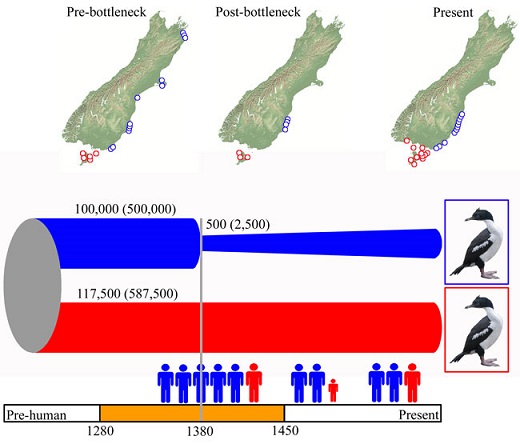Rawlence reveals New Zealand's prehistoric wildlife sanctuaries

An international research team led by University of Otago scientists has documented prehistoric "sanctuary" regions where New Zealand seabirds survived early human hunting.
The researchers used ancient-DNA analysis, radiocarbon dating and supercomputational modeling to reconstruct population histories for prehistoric seabirds around coastal New Zealand.
Dr Nic Rawlence, who carried out the genetic study, says the team found a very distinctive pattern, where shag/mapua (Leucocarbo chalconotus) populations from the Stewart Island region were little affected by human hunting, but mainland populations were rapidly decimated.
"There was a loss of more than 99% of their population size within 100 years of human arrival. These once heavily-hunted mainland populations now occupy only a fraction of their prehistoric range, having never really recovered," Dr Rawlence says.
The study suggests that the mainland populations survived on just a few rocky islands off the South Island's east coast.
"By comparison, the Stewart Island populations have experienced a relatively stable history," Dr Rawlence says.
Associate Professor Ian Smith, an Otago archaeologist involved in the study, says it seems that these contrasting wildlife histories reflect differences in prehistoric human-hunting pressure.
"Interestingly, recent archaeological studies suggest that human numbers declined in the Stewart Island region around 1500 AD, a factor which seems to explain why wildlife persisted in this region," he says.
Project leader Professor Jon Waters says that scientists have long argued about the causes of prehistoric wildlife declines and extinctions--some pointing the finger at humans, and others attributing the shifts to climate change.
"By showing drastically different wildlife histories--between regions that are climatically similar--we can start to understand the major impact of prehistoric human hunting, which differed across space and time," Professor Waters says.

 How to resolve AdBlock issue?
How to resolve AdBlock issue?